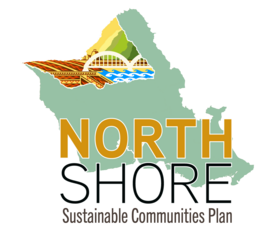Do you agree with the following vision element?
"Provide Adequate and Appropriately-Sized Public Infrastructure, Facilities, and Services"
View the 2011 NSSCP description of this vision element below:
Public agencies and private developers work together to provide adequate infrastructure and needed public facilities and services. Considering the large number of nonresidents that visit the North Shore and partake in the region’s assets, additional resources to upgrade and adequately maintain existing infrastructure systems and public facilities are being provided. Infrastructure does not detract from scenic amenities, recreational opportunities, open space, or other amenities.
Adequate, environmentally sensitive wastewater treatment systems that minimally impact groundwater and ocean resources and are consistent with the North Shore’s rural character have replaced outdated and ineffective wastewater systems.
The quality of the North Shore’s ground, surface, and nearshore waters is vital for ensuring public health, providing outdoor recreation, sustaining the integrity of ecological systems, and maintaining general environmental quality. In addition to drainage system improvements to mitigate storm runoff and regional flood hazards, adequate infrastructure for drainage systems has been established and is being maintained to ensure continuous runoff and protect the quality of coastal waters. Agricultural uses are implementing Best Management Practices (BMPs), including those recommended in the State Coastal Nonpoint Pollution Control Program, to minimize soil erosion.
An adequate circulation network that allows for efficient and safe travel supports all modes of transportation. Traffic on Kamehameha Highway between the heart of Hale‘iwa Town and Waimea Bay flows freely since safety and operational deficiencies along the aged highway system were corrected. Kamehameha Highway remains a two-lane highway; no additional through lanes have been constructed, although improvements to reduce traffic impediments (for example, bicycle/pedestrian facilities to encourage the use of alternatives modes of transportation, dedicated storage/stacking turn lanes to minimize bottlenecks affecting emergency vehicle response time, turnouts and facility improvements to reduce the number of cars parked along the highway) have been completed. The provision of secondary/emergency access into and out of the region is also available. The transportation system encourages reduced automobile dependency, and includes an integrated network of bus routes, and pedestrian paths and bikeways that link the various residential communities, parks, schools, and the town centers of Hale‘iwa and Waialua.
Other priority needs that have been addressed include retention of the public library in Waialua, maintenance of existing parks in the region, and adequate staffing and resources to ensure quality public safety services and protection from natural hazards. Use of proven renewable energy and energy conservation measures, including the use of solar energy systems and sustainable building technologies, is encouraged.
